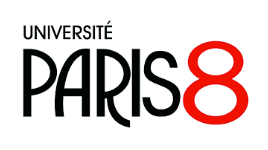12h00
59/61, rue Pouchet, Paris; salle 159
Shanti Ulfsbjorninn (Lyon)
The Geometry of Phonological Representations: Implications of Tuscan Nuclear Reduction for Models of Representation
Abstract - Phonological representations are made up of symbols located across dimensions. Two of these dimensions are time (categorialised as x-slots, CVs, precedence relationships) and melody (that can be categorialised as elements). The intersection of these dimensions gives rise to the identity of positions. A phonological grammar can define well-formedness through the alignment of these dimensions. Tuscan Nuclear Reduction is a robust distributional restriction on the properties of nuclei in unstressed position. It will be shown that the 'standard' licensing constraint account (based on restricting |A| from stressless positions) is uninsightful, rather, the best description of the phenomenon involves limiting the complexity for each dimension independently in unstressed positions. The combined implication of these statements is that melodic heads and temporal heads can only be located in the prosodic head, thereby shedding light on the nature of headedness itself: there is an architectural preference for heads to align across the layers of representation. Importantly, the structural description of this distribution cannot be stated in GP 2.0 (Pöchtrager 2006; Pöchtrager and Kaye 2010), a framework where all structural relations are expressed temporally. In particular, the number of positions required to describe [a], [i] or [u] and which differentiate high-mid and low-mid vowels cannot be translated into the required alignment of dimensions needed to parsimoniously account for the facts. In fact, GP 2.0 fails to account for the facts in such a way that suggests its representational model, with its over-emphasis of the temporal dimension, is foundationally incorrect. Moreover, the facts are reversed in the 'dialectal B' version of pretonic vocalic reduction of Brazilian Portuguese (Nevins 2012); therefore, any framework that intrinsically links prosodically conditioned nuclear reduction in seven vowel systems to 'A-headedness' or the representation of A as a structure (as it is in GP 2.0), rather than avoidance of complexity itself, loses cross-linguistic coverage also.



